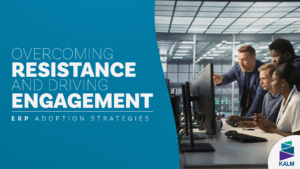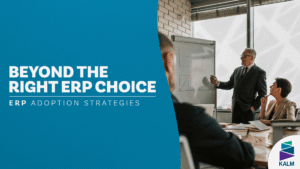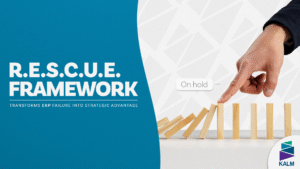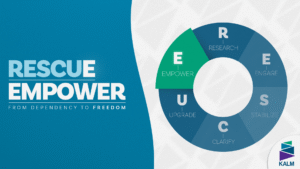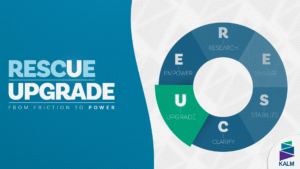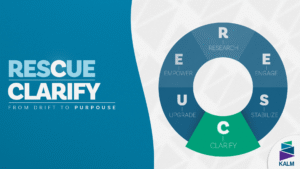The Real Challenge Starts After Go-Live
Choosing the right ERP (Enterprise Resource Planning) system is a high-stakes decision. Organizations spend months balancing features, scalability, cost, vendor fit, and technical feasibility. But once the system goes live, a harder challenge begins: getting people to actually use it.
ERP adoption strategies are what truly define success. Without adoption, ROI stalls, efficiency gains remain out of reach, and the ERP risks being seen as a failure.
This article explores the strategies required to drive adoption beyond go-live. It focuses on the human element, the alignment of goals, and the cultural shift that turns ERP from a tool into a business advantage.
1. Understanding the Human Element of ERP Adoption
ERP systems impact nearly every corner of an organization—from finance to HR, supply chain to sales. Adoption is not just technical; it is a human experience.
Why Change Is Hard
Employees don’t resist change itself—they resist loss. Spreadsheets and legacy tools may be flawed, but they feel flexible and safe. Asking staff to abandon them for ERP dashboards can feel like giving up autonomy.
The Cost of Shadow IT
Shadow IT—unofficial spreadsheets, databases, and workflows—arises when legacy systems fail to meet needs. After go-live, these tools dilute ERP value, create silos, and prevent clean data flow.
Empathy as a Change Strategy
Adoption cannot be forced. Leaders must show empathy by:
- Listening to employee concerns.
- Acknowledging habits built over years.
- Demonstrating how ERP solves daily problems.
The more human your ERP adoption strategies are, the higher the chance of success.
2. Aligning ERP Benefits with Individual and Team Goals
High-level promises—cost savings, better reporting—are not enough. Employees need to see personal gains.
Reframe the Narrative: From “You Must” to “You Get”
Instead of mandates, show tangible benefits:
- Finance: faster month-end closes, real-time visibility.
- HR: centralized employee records, smoother onboarding.
- Operations: accurate inventory, fewer manual entries.
Involve Users Early
Engagement rises when users feel ERP is built with them, not for them. Include them in process design, user testing, and dashboard reviews.
Role-Based Enablement
Avoid one-size-fits-all training. Executives need KPIs, managers need workflows, and end users need job-specific guides. Tailoring is central to ERP adoption strategies.
3. Building a Change Narrative – Not Just a Project Plan
Culture shifts through stories, not directives.
- Old story: “We need to upgrade outdated systems.”
- New story: “We’re moving from chaos to clarity—this ERP is how we’ll get there together.”
Keep Messaging Simple and Honest
Craft 2–3 messages and repeat them consistently:
- “One platform. One version of truth.”
- “Less manual work. More time for what matters.”
Leaders as Storytellers
Leaders must share their own struggles with legacy systems and how ERP helps them. When executives model belief, employees follow.
4. Driving Adoption Through Smart Enablement
Training alone is not enough. Enablement ensures that users can actually succeed.
Design for Real Learning
Offer multiple formats:
- Interactive workshops.
- Short video tutorials.
- Quick-reference guides.
- Sandbox environments.
Create Champions, Not Just Trainers
Identify power users and department leads as ERP champions. Recognized peers influence adoption far more than external trainers.
Human-Centered Support
Set up ERP support channels in Teams or Slack. Use chatbots for basics, but always keep human support accessible.
5. Dealing with Resistance and Legacy Habits
Resistance is natural. The goal isn’t elimination but constructive engagement.
Respect the Emotional Cost
Legacy processes often represent pride and years of refinement. Acknowledge their value before replacing them.
Listen Before Responding
Ask:
- “What’s not working?”
- “What are you afraid to lose?”
Often, resistance highlights valid gaps that ERP adoption strategies can address.
Sunset Old Systems Gradually
Avoid sudden cutoffs. Phase systems out, highlight ERP advantages, and share success stories.
6. Sustaining Mindshare Over Time
Adoption doesn’t end at go-live—it begins there.
Measure What Matters
Key metrics:
- % of users logging in regularly.
- Number of tasks completed in ERP.
- Support ticket volume.
- Training completion rates.
Celebrate Wins
Recognition fuels engagement. Share stories of teams who abandoned spreadsheets or champions who supported peers.
7. Communicate ERP Updates Transparently
Transparency builds trust.
Set a Cadence
Provide consistent updates—monthly “What’s New” emails, quarterly notes, and urgent fixes.
Tailor Communication
Executives need strategy-level updates, managers need workflow changes, and end users need usability improvements.
Explain the “Why”
Every change should answer: What’s changing? Why? How does it help me?
8. Track and Celebrate Improvement Metrics
Track progress over time:
- Reduced processing times.
- Fewer errors and duplications.
- Higher satisfaction scores.
Celebrate these wins widely. Adoption becomes contagious when success stories are visible.
Winning the ERP Adoption Battle
Choosing the right ERP matters—but adoption determines success.
With the right ERP adoption strategies, companies can:
- Earn trust and mindshare.
- Align ERP with individual goals.
- Build a lasting culture of improvement.
When adoption sticks, ERP transforms from “that system I must use” into “the system that helps me win.” That’s the essence of long-term transformation.


